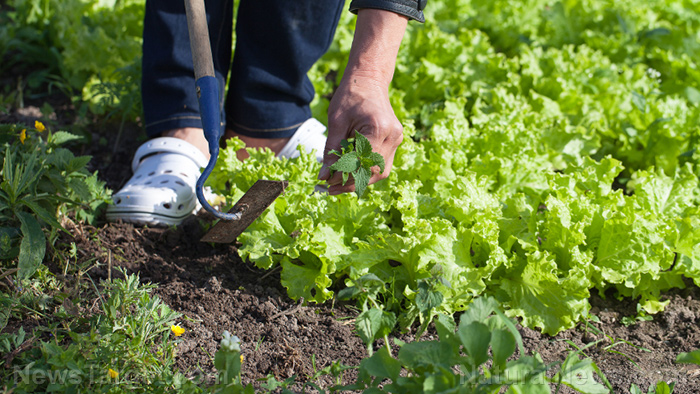Surviving with a P.L.A.N.: How emergency preparedness can help you survive when SHTF
10/30/2019 / By Grace Olson

Planning is half of the race when it comes to survival. Whether it’s picking out survival tools or doing mental exercises, planning increases your chances of staying alive. (h/t to PreppersWill.com)
Essential elements for survival
There are six elements you need to secure before SHTF. These are water, fire, shelter, food, navigation and medical security. Each of these elements are important. Their priorities vary according to the situation. In any event, water is usually secured first. However, if you find yourself in the rain, shelter goes first.
The availability of these elements depends on three important factors:
- Climate – The climate of an area dictates how easy or difficult you can secure any of the six elements above. In cold weather, it’s more difficult to start a fire without a match or a lighter. If the climate is too hot, water becomes your priority.
- Location – An emergency doesn’t choose when or where it strikes. You can be in a jungle, a desert, or a plane when the unexpected happens. Each location has its advantages and disadvantages. For example, the jungle is filled with resources, but there are many insects that may carry disease.
- Carried items – Survival items, like water filters, fire starters, and food, lessen the amount of effort you have to make to secure the six essential elements. However, these items are limited, so it’s best to learn survival skills still. (Related: Prepare for common survival scenarios by stocking up on these lifesaving tools.)
Now that you know the things you must secure, you need to follow a plan of execution. For that, simply follow the acronym, P.L.A.N.
Sponsored solution from the Health Ranger Store: Lab-verified Nascent Iodine solution is a dietary supplement that provides your body with supplemental iodine to help protect your thyroid during radiation exposure. Nuclear accidents such as Fukushima (or nuclear war) can expose your body to radioactive iodine-131, a dangerous radioisotope. Pre-loading your system with stable iodine occupies the iodine receptor sites on your organs, causing your body to naturally expel radioactive iodine you may have been exposed to through air, food, water or milk products. This defensive strategy is recommended by nearly all health authorities, worldwide, including the Nuclear Regulatory Commission. Discover more at this link.
P – Protection
The first thing to do is ensure your safety. Whichever location you find yourself in, get yourself out of immediate danger. This includes floods, avalanches, or a wild attack.
Once you’re out of immediate danger, you need to protect yourself from the elements. Find a place where you can set up camp. Ideally, the camp has easy access to resources while giving enough cover from potential attacks. Build a makeshift shelter from the wreckage or construct a shack from sticks and leaves.
Afterward, depending on the climate, you can either look for water or build a fire. If night is approaching, it’s best to build a fire first for warmth. If it’s still daytime, you can look for water first.
L – Location
After attending to your immediate needs, you can start setting up air marker panels and signal fires. This signals first responders to your location.
If you have communication devices, keep them safe and don’t waste their batteries. Look for anything that you can use as a signal marker, like bright materials and clothes. When making an SOS sign, make sure that each letter is at least 20 yards long.
Overall, try any method to signal for help.
A – Acquisition
Despite your efforts, help does not always come on time. In an SHTF situation, it’s highly possible that a lot of services are no longer available, and you’ll have to survive on your own. When that happens, you need to secure food and water.
Try to find a stable water source, like a river or a lake. Not only will it keep you hydrated, it also attracts insects and animals that you can catch as food.
Look for any plants that you can eat, but be wary of mushrooms. Many of them may have negative side effects. Depending on the season, fruits and nuts may be available.
N – Navigation
You can spend up to four weeks in an area. After that, it’s best to look for another location. Resources are depleting each day you stay longer, and it’s possible that first responders may be looking in another place. Moreover, excrement and other waste products no longer makes the place sanitary.
If you’re near a river or a lake, simply follow where it goes. Civilization is often built near water channels.
From these tips, you have a clearer picture on what to do when SHTF. Read more on conquering the wild and bug out needs at BugOut.news.
Sources include:
Tagged Under: bug out, bug out kits, EDC kits, emergency, finding water, how-to, off grid, preparedness, prepper, prepping, setting camp, shelter, SHTF, starting fire, survival, survival items, survival tools, survivalist
RECENT NEWS & ARTICLES
COPYRIGHT © 2017 · SURVIVAL NEWS



















